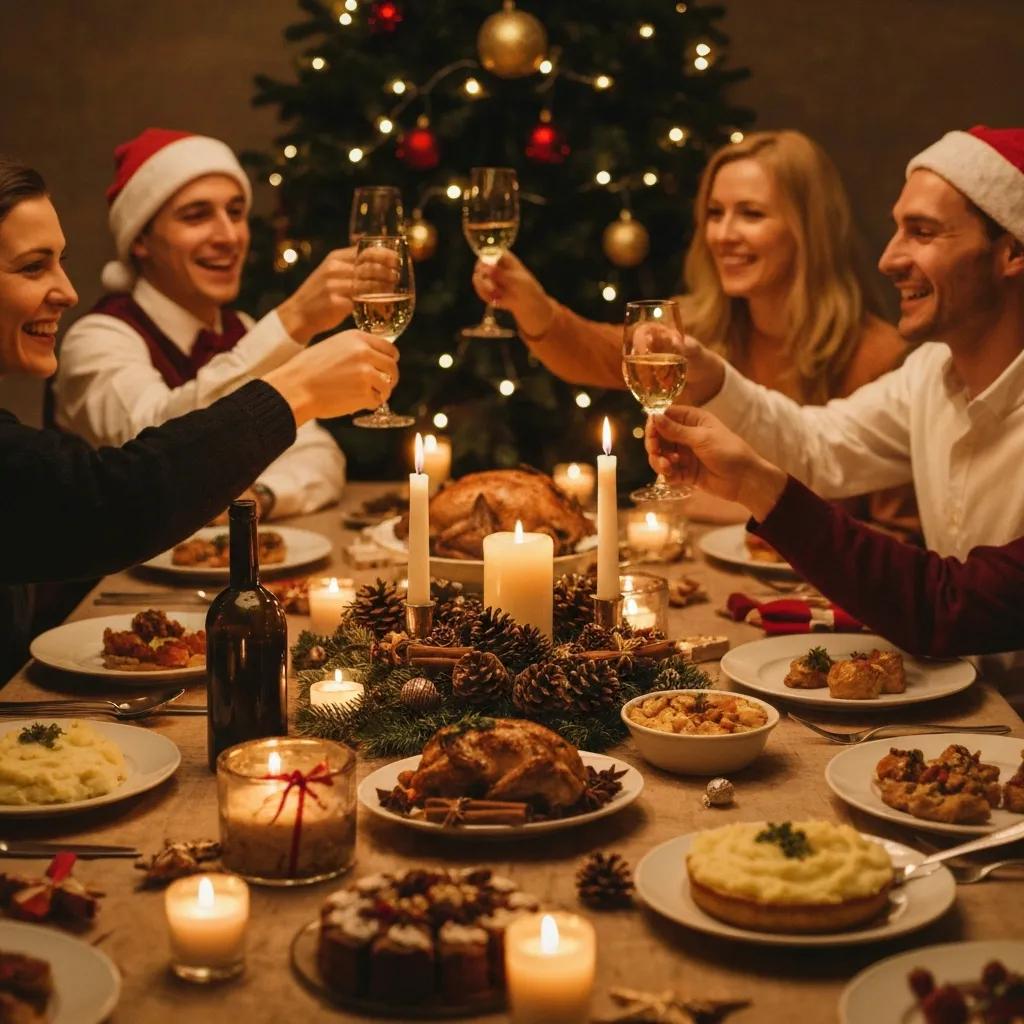Cultural weddings are a beautiful tapestry of traditions, rituals, and customs that celebrate the heritage and identity of the couple. Catering for these diverse celebrations requires a deep understanding and respect for each culture’s wedding traditions, ensuring that every aspect of the event honors its significance.
In this guide, we’ll explore how to cater perfectly for a cultural wedding day, offering insights into the culinary preferences, traditional dishes, and dietary considerations that make each wedding special.
From coordinating with knowledgeable chefs to incorporating authentic ingredients and presentation styles, discover the key elements to creating a memorable and respectful culinary experience for every cultural wedding. Whether you’re planning your own wedding or catering for others, this guide will help you navigate the rich world of cultural traditions with grace and culinary excellence.
Planning a Cultural Wedding? Learn the Art of Catering Cultural Delights!
Embracing Cultural Diversity in Wedding Planning
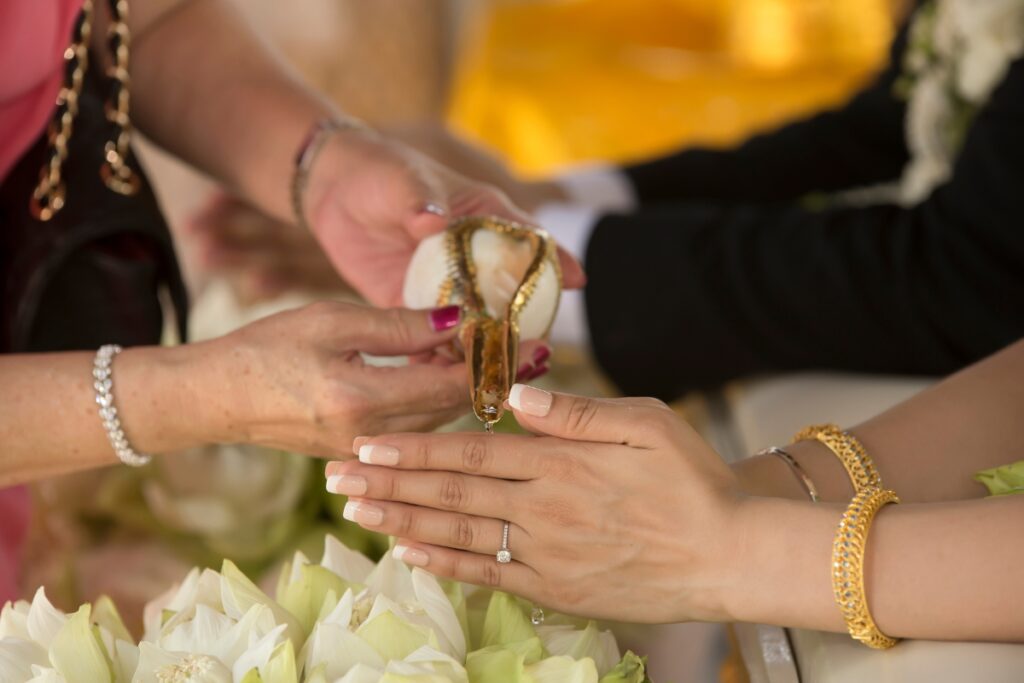
When it comes to planning a cultural wedding, one of the most important aspects is embracing and celebrating the diversity of traditions. Each culture has its own unique customs and rituals, and it is essential to understand and respect these traditions throughout the planning process. By doing so, you can create a wedding that not only reflects the couple’s heritage but also allows their guests to experience and appreciate different cultures.
Before diving into the details of planning a cultural wedding, it is crucial to conduct thorough research and gain a deep understanding of the traditions involved. This will help you navigate through the various customs and ensure that every aspect of the wedding is respectful and authentic. Take the time to learn about traditional ceremonies, symbolic rituals, and any specific requirements or restrictions that may apply.
In addition to research, engaging with cultural experts and family members can provide invaluable insights. Their guidance can help you understand the deeper significance of various rituals and ensure that your approach is culturally sensitive and accurate.
When blending traditions from different cultures, creativity and sensitivity are key. Finding ways to harmoniously combine ceremonies, décor, music, and attire from both cultures can create a unique and meaningful celebration.
Finally, creating an inclusive experience for guests by providing context and explanations for the traditions being observed can enhance their understanding and appreciation of the cultural diversity being celebrated. This can be achieved through wedding programs, signage, or a knowledgeable officiant who can narrate the significance of each ritual.
Research and Understanding: Key Steps Before Planning
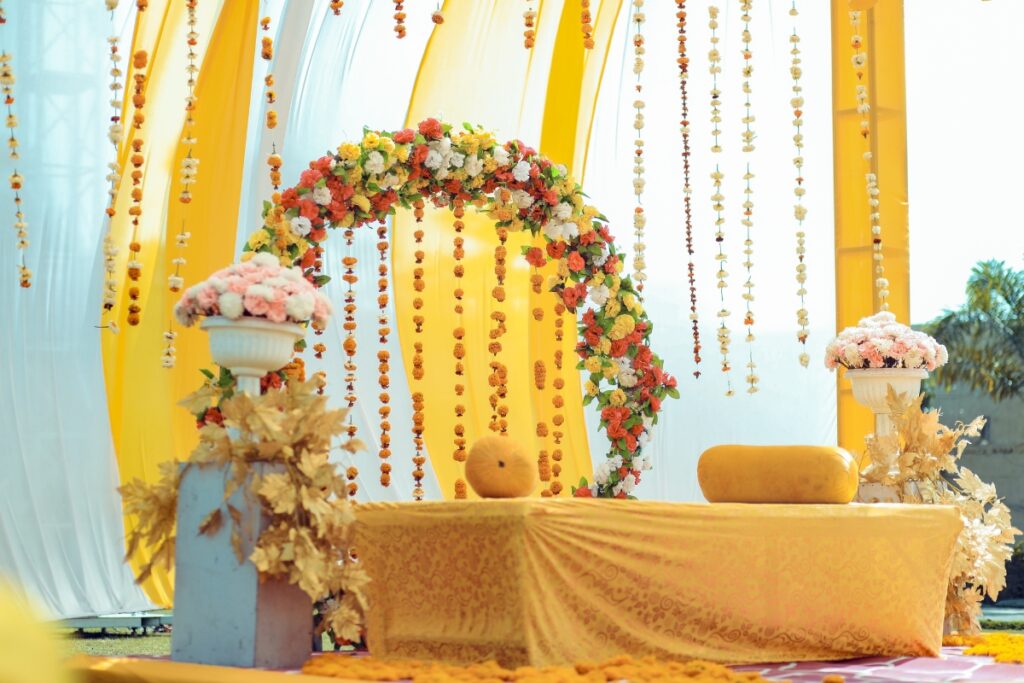
Researching cultural traditions will also help you determine which elements can be incorporated into the wedding ceremony and reception. For example, in an Indian wedding, you may choose to include a mehndi ceremony where intricate henna designs are applied to the bride’s hands. In a Chinese wedding, a tea ceremony could be incorporated as a way to honor both families. Similarly, in a Jewish wedding, the couple might want to include the breaking of the glass, while a Filipino wedding might feature the traditional money dance.
In addition to understanding traditions, it is essential to have open communication with the couple about their expectations for their cultural wedding. They may have specific rituals or customs they want to include or exclude from their special day. By listening to their desires and concerns, you can ensure that their vision is brought to life while respecting their cultural heritage. This dialogue can also uncover unique personal touches, such as incorporating heirlooms or family recipes, which can add depth and meaning to the celebration.
Understanding the cultural significance behind these traditions is equally important. Knowing why certain rituals are performed can help in planning them with the appropriate level of respect and authenticity. This might involve learning about the symbolic meanings of specific ceremonies, the historical context behind certain practices, or the proper way to execute these traditions.
Furthermore, consider the logistical aspects of incorporating various cultural elements. Some traditions may require specific timing, special attire, or particular settings. Being aware of these details in advance can help in coordinating the ceremony and reception smoothly.
Finally, involving cultural advisors or family elders in the planning process can provide valuable insights and ensure that all traditions are honored correctly. Their experience and knowledge can guide you in making informed decisions and help avoid any unintentional cultural faux pas. This collaborative approach not only enriches the planning process but also fosters a sense of community and respect among all parties involved.
Creating a Fusion Menu that Reflects Heritage and Tastes

A significant aspect of any wedding celebration is food. When planning a cultural wedding, creating a fusion menu that reflects both heritage and tastes becomes an exciting challenge. It is essential to incorporate traditional dishes that represent the couple’s cultural backgrounds while also considering the preferences and dietary restrictions of their guests.
Collaborating with a skilled chef or catering team who specializes in multicultural cuisine can be immensely helpful. They can guide you in selecting dishes that authentically represent each culture while ensuring a harmonious blend of flavors. From Indian curries to Chinese dim sum, the menu should be a delightful journey through different culinary traditions.
- Identify Key Dishes: Choose staple items that hold cultural significance and are favorites of the couple. Examples include biryani for an Indian wedding, sushi for a Japanese ceremony, and paella for a Spanish celebration.
- Collaborate with Skilled Chefs: Work with chefs or catering teams who specialize in multicultural cuisine. They can guide you in selecting dishes that authentically represent each culture while ensuring a harmonious blend of flavors.
- Modernize and Blend: Present traditional dishes in a way that complements the overall theme of the wedding. Examples include Korean BBQ tacos and Italian-inspired sushi rolls.
- Variety in Appetizers, Sides, and Desserts: Offer a variety of small plates to allow guests to sample flavors from both cultures. Examples include Greek spanakopita and Mexican empanadas paired with contemporary twists.
- Dessert Table: Showcase cultural heritage with a variety of desserts from each culture. Examples include French macarons alongside Indian gulab jamun and Turkish baklava paired with Brazilian brigadeiros.
- Cultural Beverages: Reflect cultural fusion with signature cocktails or mocktails inspired by traditional drinks. Examples include lychee martinis for Asian influence, sangria with tropical fruits for Latin flavors, Moroccan mint tea, and Mexican horchata.
- Accommodate Dietary Preferences: Ensure the menu includes vegetarian, vegan, gluten-free, and allergen-free options. Work closely with your catering team to label dishes clearly to help guests make informed choices.
- Menu Presentation: Present dishes in a visually appealing manner that aligns with the wedding’s theme. Use traditional serving ware and decorations to enhance authenticity.
By thoughtfully creating a fusion menu that honors both heritage and modern tastes, you can create a memorable and inclusive dining experience for all wedding guests. This approach not only celebrates the cultural backgrounds of the couple but also offers a unique culinary adventure that everyone will enjoy.
Collaborating with the Couple

Planning a cultural wedding requires close collaboration with the couple throughout every step of the process. Their input and involvement are crucial in ensuring that their wedding reflects their unique cultural backgrounds and personal preferences.
Schedule regular meetings with the couple to discuss ideas, review progress, and make decisions together. This collaborative approach will not only help you understand their vision but also build trust and ensure that every detail is aligned with their expectations.
- Understand Their Vision: Begin with an in-depth consultation to understand the couple’s vision, cultural backgrounds, and specific traditions they want to incorporate. This sets a strong foundation for planning a wedding that is both personal and culturally meaningful.
- Regular Updates and Feedback: Schedule regular meetings to provide updates and gather feedback. This ensures that the couple is continuously involved in the decision-making process and that their preferences are always considered.
- Customized Planning: Tailor the planning process to accommodate the couple’s unique needs and wishes. This might involve special requests for cultural rituals, specific decor elements, or unique menu items that are significant to them.
- Respect and Sensitivity: Approach every discussion with respect and sensitivity towards their cultural values and traditions. This helps in building a trusting relationship and ensures that the wedding planning process is respectful of their heritage.
- Incorporate Personal Touches: Encourage the couple to include personal touches that reflect their personalities and love story. This could be through custom vows, unique decor items, or special performances during the reception.
- Family Involvement: Recognize the importance of family in a cultural wedding and involve family members in the planning process where appropriate. Their input can provide valuable insights and help in honoring cultural traditions accurately.
- Flexibility and Adaptability: Be prepared to adapt plans based on the couple’s evolving needs and any cultural nuances that arise. Flexibility is key to ensuring that the wedding day runs smoothly and is true to their vision.
- Documentation and Detail: Keep detailed notes and documentation of all decisions and preferences discussed during meetings. This ensures that no detail is overlooked and helps in maintaining consistency throughout the planning process.
By maintaining open communication and actively involving the couple in every step of the planning process, you can ensure that their cultural wedding is a true reflection of their heritage and personal style. This collaborative approach not only enhances the planning experience but also creates a wedding day that is meaningful and memorable for the couple and their guests.
Interactive and Engaging Food Stations
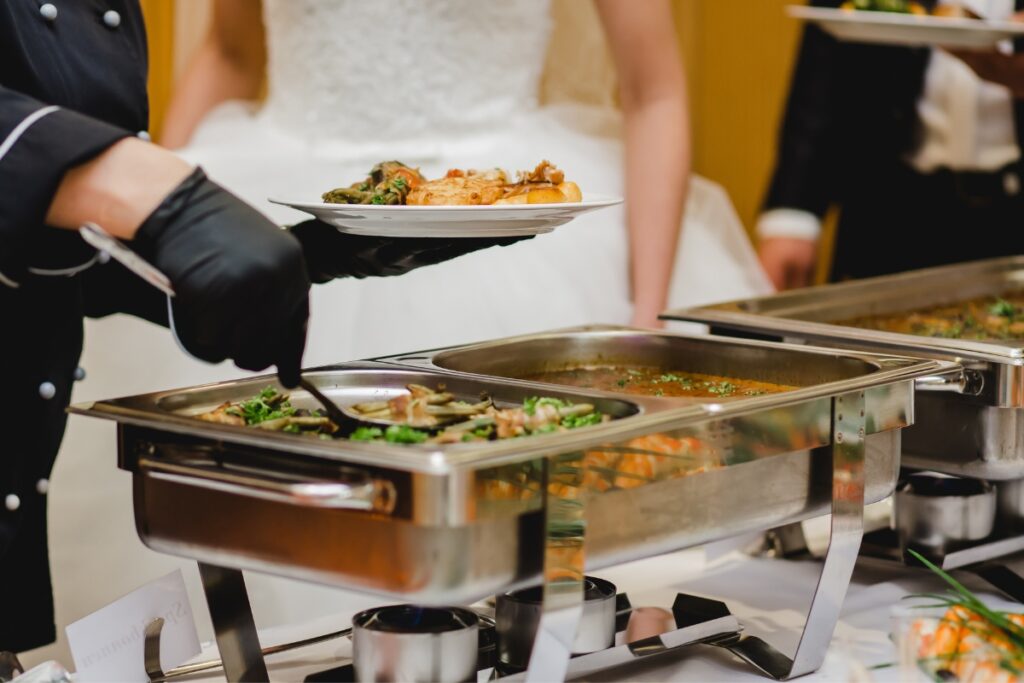
Incorporating interactive food stations into your wedding reception is an excellent way to engage guests while celebrating cultural diversity. These stations can showcase different cuisines and allow guests to sample a variety of dishes.
For example, you could have a taco station with various fillings and toppings, representing Mexican cuisine. A pasta station could offer different types of pasta and sauces, highlighting Italian flavors. A sushi rolling station could let guests customize their sushi rolls, offering a taste of Japanese culture.
Interactive dessert stations, such as a crepe station or a build-your-own sundae bar, can add a sweet and playful touch to the reception. These interactive food stations not only provide delicious options but also create opportunities for guests to learn about different cultures through their culinary traditions.
They encourage mingling and conversation, making the dining experience both educational and enjoyable. By engaging guests in the food preparation process, these stations also add an element of entertainment to the celebration, making it even more memorable.
Presentation and Aesthetics
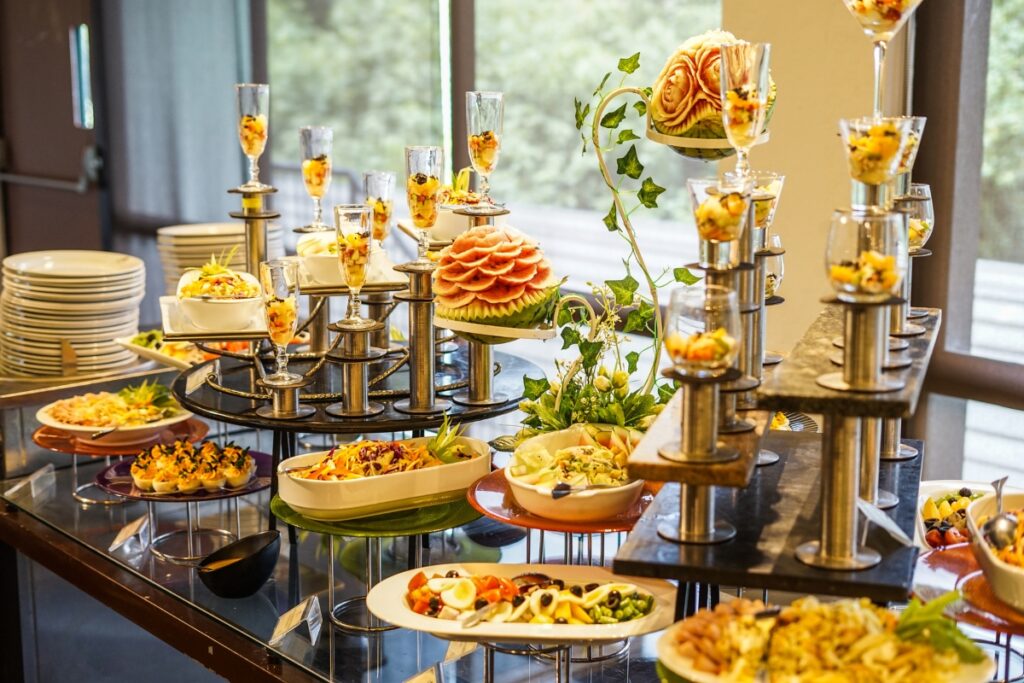
The presentation and aesthetics of the food at a cultural wedding play a vital role in enhancing the overall dining experience. Beautifully presented dishes not only appeal to the senses but also honor the cultural significance of the food. Paying attention to the visual appeal can make a lasting impression on guests and elevate the celebration.
Begin with the plating. Each dish should be arranged thoughtfully, with an eye for color, texture, and balance. Using traditional serving ware, such as ornate platters, ceramic bowls, or bamboo steamers, can enhance authenticity and add a cultural touch. For example, serving sushi on wooden boards or using brass utensils for Indian dishes can create a more immersive experience.
The table setting also plays a crucial role. Incorporate elements that reflect the couple’s heritage, such as embroidered tablecloths, hand-painted ceramics, or culturally inspired centerpieces. Fresh flowers, foliage, and candles can add elegance and warmth to the dining space. Coordinating the colors and themes of the table settings with the overall wedding decor helps create a cohesive and visually appealing atmosphere.
Buffet and food station setups should be just as carefully planned. Ensure that each station is attractively arranged and easy to navigate. Label each dish clearly with names and descriptions, including any cultural significance, to educate and engage guests. Using multilingual signage can add a thoughtful touch, especially in multicultural ceremonies where guests may speak different languages.
Lighting is another key aspect. Soft, ambient lighting can create a warm and inviting atmosphere, while spotlights can highlight the beauty of the food. Ensure that the lighting complements the colors and presentation of the dishes without overshadowing them.
Finally, consider the flow and timing of the food service. Serving courses in a sequence that tells a story or follows traditional customs can enhance the cultural experience. By focusing on the presentation and aesthetics of the food, you can create a memorable and meaningful dining experience that celebrates cultural heritage and delights the senses.
Incorporating Cultural Drinks and Desserts
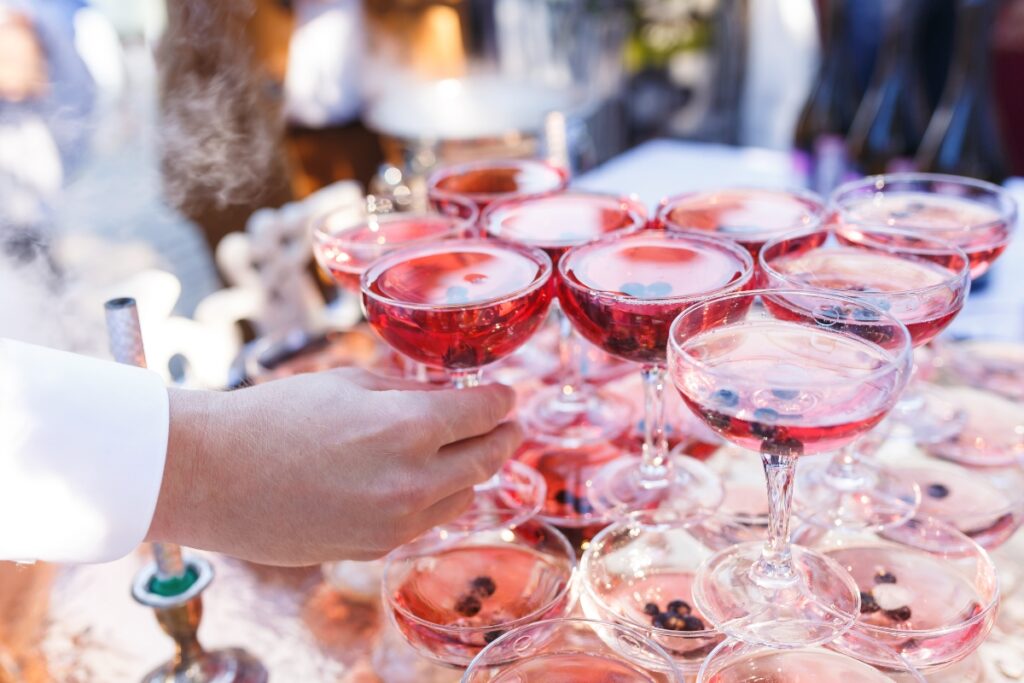
When planning a cultural wedding, don’t forget about drinks and desserts! Just like the menu, these elements can be infused with cultural flavors and traditions.
Offering signature cocktails inspired by different cultures is an excellent way to introduce guests to unique flavors. For example, you could serve a mojito with a twist of mango for an Indian-inspired drink or a lychee martini for an Asian touch. Additionally, non-alcoholic options like Moroccan mint tea or Mexican horchata can provide refreshing and culturally significant alternatives.
In addition to drinks, consider incorporating traditional desserts that are significant in the couple’s culture. Aside from the traditional wedding cake, there are plenty of cultural options to consider. From Indian sweets like gulab jamun to French macarons, these treats will delight guests while honoring the couple’s heritage. You might also consider having a dessert station featuring a variety of cultural sweets, such as Italian cannoli, Middle Eastern baklava, or Japanese mochi.
The presentation of these desserts can further enhance the cultural theme. Use traditional serving dishes and decorations to display the sweets, creating a visually appealing dessert table. Including small cards with descriptions of each dessert and its cultural significance can add an educational and personal touch, making the experience even more special for the guests.
Staff Training and Cultural Sensitivity

Lastly, it is crucial to ensure that all staff involved in the wedding planning process are trained in cultural sensitivity. This includes the catering team, venue staff, and any other individuals who will be interacting with guests.
Provide training sessions to educate staff about different cultural traditions, customs, and etiquette. This will help them better understand and respect the diverse backgrounds of the couple and their guests. Sensitivity to cultural differences will ensure that everyone feels welcomed and valued throughout the wedding celebration. Additionally, staff should be trained to handle specific cultural practices, such as serving food in a traditional manner or addressing guests with appropriate titles and gestures.
Encourage open communication and provide resources for staff to ask questions and learn more about the cultures they will be engaging with. Regular refreshers and updates on cultural practices can keep staff knowledgeable and prepared for any unique requirements that may arise. This proactive approach not only enhances the guest experience but also demonstrates the company’s commitment to cultural inclusivity and excellence in service.
How to Cater Cultural Weddings: Authentic Menus & Traditions
Cultural ceremonies are a beautiful celebration of unity in diversity. They allow couples to honor their heritage while creating a memorable experience for themselves and their guests. Remember, planning a cultural wedding requires research, understanding, collaboration with the couple, and attention to detail. From crafting a fusion menu that reflects heritage and tastes to incorporating interactive food stations and cultural drinks, every aspect should be thoughtfully curated to create an unforgettable experience for all.
Perfectly catering for every tradition at a cultural wedding requires expertise and attention to detail. At A Delightful Bitefull Catering, we specialize in creating bespoke menus that honor and celebrate diverse cultural traditions. Let us help you make your special day unforgettable with our exceptional wedding catering services. Contact us today at (770) 565-4146 or fill out our website form to discuss your needs and how we can bring your vision to life. Choose A Delightful Bitefull Catering for a wedding feast that respects and enhances every tradition.




